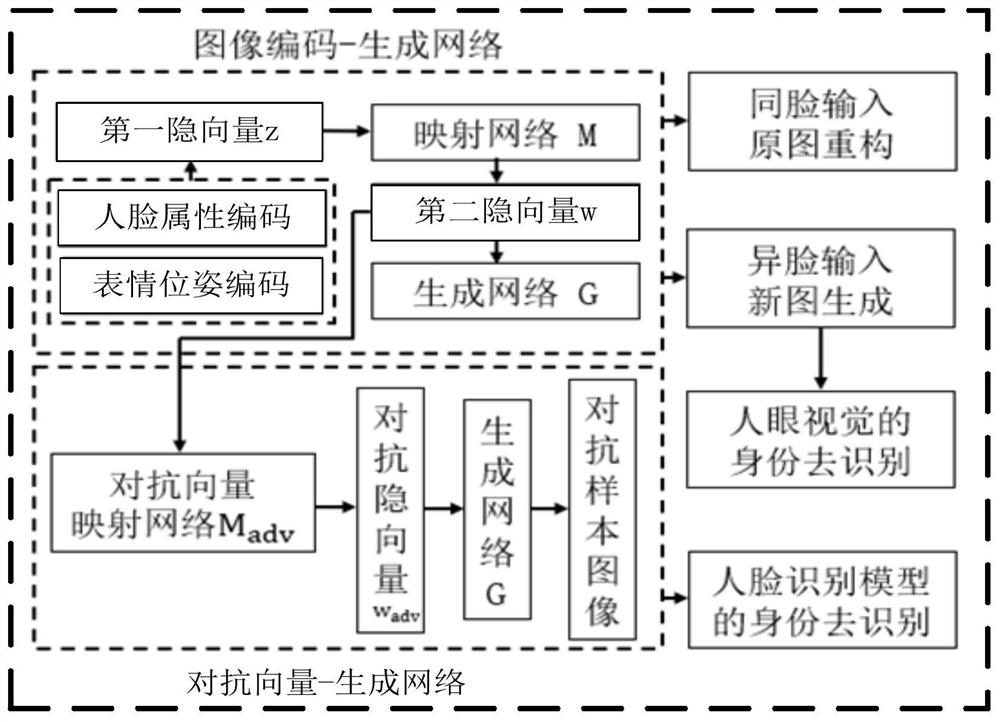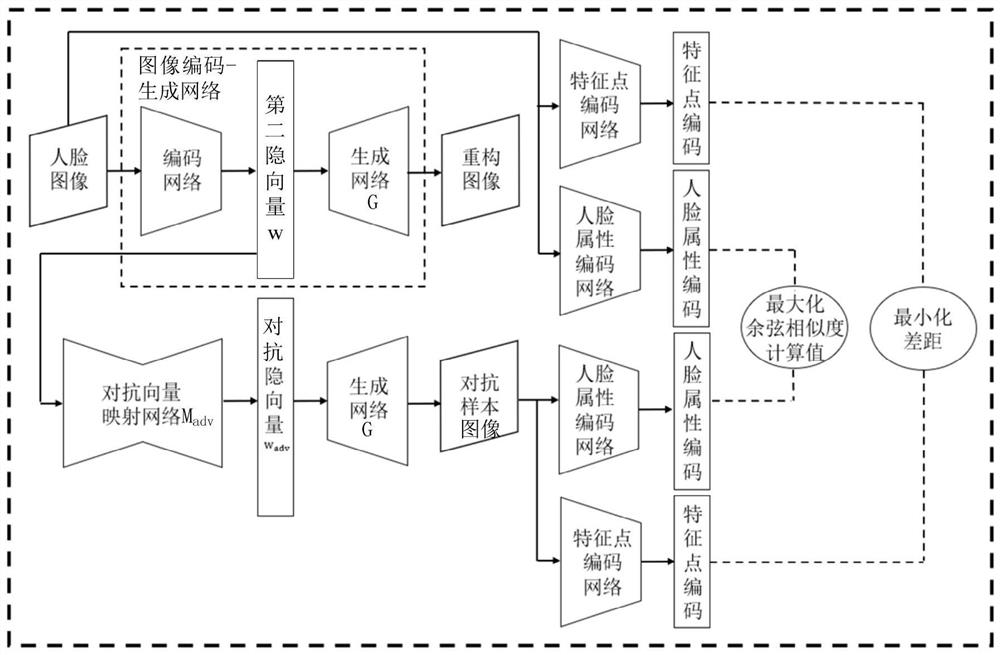A Face Data Identity De-recognition Method Based on Generative Adversarial Networks
A recognition method and generative technology, applied in character and pattern recognition, biological neural network models, neural learning methods, etc., can solve problems such as loss of original face information and image quality degradation, and achieve high image quality.
- Summary
- Abstract
- Description
- Claims
- Application Information
AI Technical Summary
Problems solved by technology
Method used
Image
Examples
Embodiment Construction
[0048] The specific embodiments of the present invention will be further described below in conjunction with the accompanying drawings.
[0049] This application discloses a face data identity de-identification method based on a generative confrontation network, the flow chart of which is as followsfigure 1 As shown, the de-identification method includes the following steps:
[0050] Step 1: Build an image encoding-generating network.
[0051] The image encoding-generating network is used to encode and decouple the face attributes and expression poses of the face image in the latent space. The face image includes the face attribute image and the expression pose image.
[0052] Such as figure 2 As shown, it specifically includes the following sub-steps:
[0053] Step 11: Build the model framework of image encoding-generating network, including:
[0054] The pre-trained ResNet-50 network is used as the face attribute encoding network, and the ResNet-50 network is pre-trained...
PUM
 Login to View More
Login to View More Abstract
Description
Claims
Application Information
 Login to View More
Login to View More - R&D
- Intellectual Property
- Life Sciences
- Materials
- Tech Scout
- Unparalleled Data Quality
- Higher Quality Content
- 60% Fewer Hallucinations
Browse by: Latest US Patents, China's latest patents, Technical Efficacy Thesaurus, Application Domain, Technology Topic, Popular Technical Reports.
© 2025 PatSnap. All rights reserved.Legal|Privacy policy|Modern Slavery Act Transparency Statement|Sitemap|About US| Contact US: help@patsnap.com



